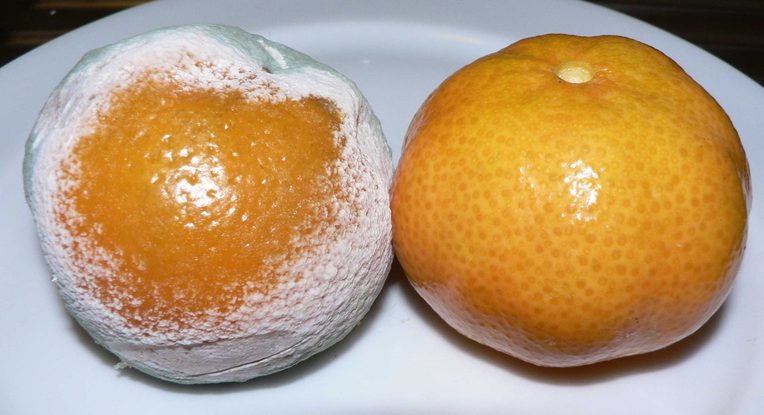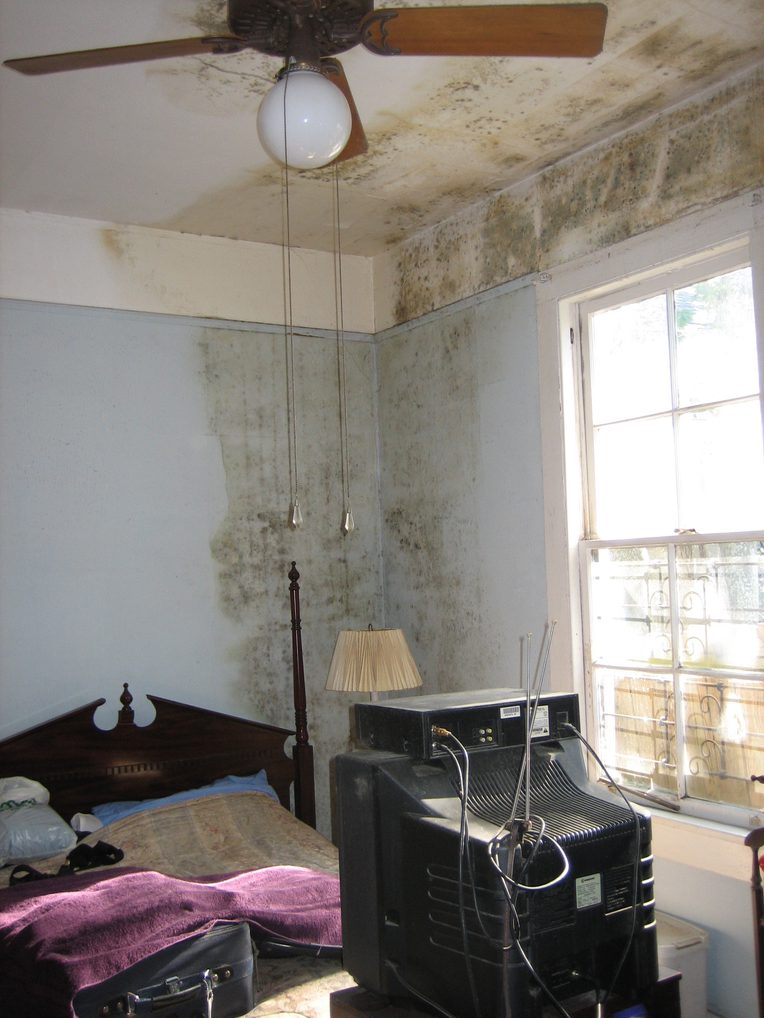Mold
From the Series: An Anthropogenic Table of Elements
From the Series: An Anthropogenic Table of Elements

Indoor air is largely ungoverned breathing space. As a result, there is much we don’t know about air quality in domestic dwellings. Although a few substances—carbon monoxide, radon, and tobacco smoke—have captured the medico-legal imaginary, and are thus subject to some surveillance, mold falls into an enormous category of unknown knowns in environmental health arenas. In short, there is definitely mold in your living space and you most likely don’t know what kind of mold or how much there is. Uninhibited, mold travels between and within outdoor and indoor environments by way of spores, which are sometimes described as tiny seeds. Spores can mix with other atmospheric matter—lint, dust, dander, pollen, and carpet fibers—and reproduce or germinate depending on the species at hand. They can attach and travel by way of clothing and reproduce with the aid of water. Mold produces a broad range of physical reactions, but it’s hard to know how you might respond unless you have a known allergy. Reactions range from subclinical symptoms to rashes and headaches, asthma attacks, and more serious immune system problems. And some types of mold, like Stachybotrys chartarum, or black mold, can be deadly. Mold’s presence on the Earth for millions of years, cohabitating with humans for as long as we have been creating shelter, belies its anthropogenic elementality. Over decades, it has become a problematic companion.

A key characteristic of all molds is that they are biodegraders that participate in the slow process of death and deterioration. This has both negative and positive valances. Observe, for example, how mold breaks down matter such as wood, leaves, food, and the dry wall that provides structure for your home. This trait is what made mold (in part) such a powerful product of twentieth-century technoscience. Penicillium is perhaps most famous in this regard. The antibiotic agent Penicillium chrysogenum destroys bacteria by killing off or preventing growth, saving millions of lives since its discovery in the 1920s. Penicillium camemberti, on the other hand, is used in the production of soft cheeses, like brie and Camembert, to keep bacteria carefully in check. Over the last century, Penicillium mobilized transnational networks of scientists and laboratories, fueled industrial and artisanal innovations, and was galvanized by national security agendas—killing off some life to allow for other kinds of living. Penicillium however is just one genus of fungi. The Aspergillus species, by contrast, are common allergens that have the potential to synthesize mycotoxins. For mold, context matters: In pharmaceutical and building industries, technoscientific developments fueled mold’s distribution as both carefully crafted product and unintentional byproduct.

Mold is a pharmakon, a term used to describe things that carry a double valence as both remedy and poison. Pharmakons are materials or agents with inseperable positive and negative effects. The pharmakon is almost always generated in connection to a deeper social problem, often a double bind. João Biehl and Amy Moran-Thomas (2009, 269) suggest that pharmakons act as vectors, for “new mechanisms of sociomedical and subjective control.” As vectors, pharmakons may replace social ties and existing forms of life or governance. In anthropological theory, pharmakons most often refer to biomedical materials—drugs and diagnostic categories, for example—that contain both hope and new kinds of harm (Martin 2006; Lovell 2013). What if we were to extend this analytic to the arena of public health, where policy also enacts forms of sociotechnical control?
In my work in Philadelphia, mold plays a starring role in community-based workshops on climate change. Residents learn the mechanisms of climate science through local, personally relevant examples that make connections between weather and home environments. In a game called Mold Mystery, for example, workshop participants engage in the tricky work of parsing harmful molds from their lookalikes. The game is designed to get people thinking about how different kinds of domestic materials interact. We have found that most people know little about mold, including public health professionals. By extension, it’s impossible to say how many buildings in Philadelphia harbor mold at levels that may be causing ill health effects. Like other public health issues embedded in domestic environments, there are no mechanisms to report or track mold. Commercial and public buildings have not escaped the mold problem either, and recent public-school closures due to mold infestation have only given weight to existing concern and conversation.
Philadelphia is projected to become warmer and wetter over time,
precisely the conditions that many molds thrive in. The affordable
housing crisis has long been implicated in the city’s asthma epidemic,
as mold is deemed a potent trigger of disordered breathing. Climate
change is prompting more of us to ask what kinds of
infrastructure—scientific, informational, legal, and medical—exist to
address mold in residential and public spaces. This is where mold
doubles back as a remedial pharmakon of the Anthropocene: Can the public
health impacts of mold lead to policies that address Philadelphia’s
long-standing housing crisis? New public health policy introduced by the
Children’s Hospital of Philadelphia, for example, offers a
nonpharmaceutical remedy. Beginning in 2019, households enrolled in the Community Asthma Prevention Program
will receive support for basic home repairs, a move designed to tackle
the structural conditions that lead to mold growth in homes. Mold now
serves as a stepping stone to address what is a much broader and
politically charged problem in Philadelphia—safe, affordable housing.
Here is where the pharmakon mold might operate as a vector for sociomedical care.

As an anthropogenic element, molds are “excessive of human agency and intervention” (Engelmann and McCormick 2015, 242), a medium or vector that produces new ways of being and dwelling through and beyond our technoscientific play. Translating mold into pharmakon allows us to work with this multicellular fungi as an anthropogenic element; an element with a range of curative and poisonous valences that can expose deeper social values and priorities and perhaps policies that can address longstanding anthropogenic problems.
Biehl, João, and Amy Moran-Thomas. 2009. "Symptom: Subjectivities, Social Ills, Technologies." Annual Review of Anthropology 38: 267—88.
Engelmann, Sasha, and Derek McCormack. 2018. "Elemental Aesthetics: On Artistic Experiments with Solar Energy." Annals of the American Association of Geographers 108, no. 1: 241—59.
Lovell, Anne M. 2013. "Elusive Travelers: Russian Narcology, Transnational Toxicomanias, and the Great French Ecological Experiment." In Addiction Trajectories, edited by Eugene Raikhel and William Garriott, 126—59. Durham, N.C.: Duke University Press.
Martin, Emily. 2006. “The Pharmaceutical Person.” BioSocieties 1, no. 3: 273—87.
Money, Nicholas P. 2004. Carpet Monsters and Killer Spores: A Natural History of Toxic Mold. Oxford: Oxford University Press.